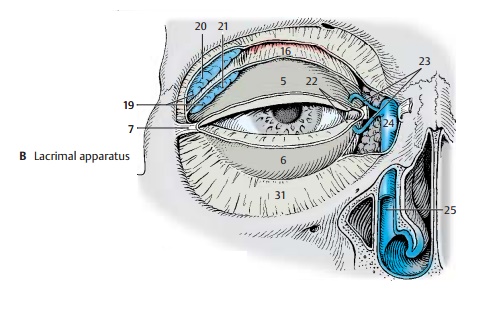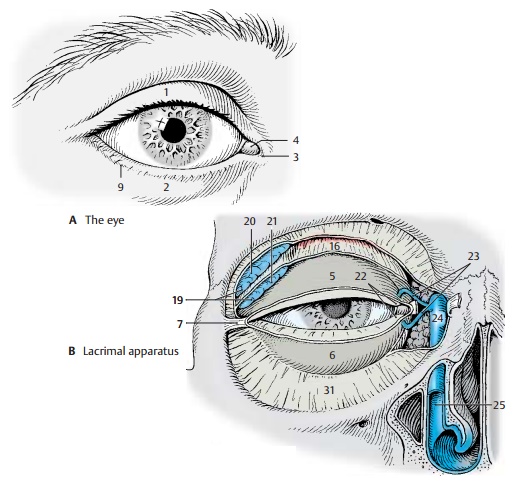Chapter: Human Nervous System and Sensory Organs : The Eye
Lacrimal Apparatus - Structure of the Eye

Lacrimal Apparatus
The lacrimal gland (B19) lies above the lateral angle of the eye; it is divided by the
tendon of the levator muscle of the upper eyelid into an orbital part (B20) and a
palpebralpart (B21). Its excretory ducts at the con-junctival fornix secrete the
lacrimal fluid (tears), which keeps the anterior aspect of the eyeball
continuously moist and collects in the lacrimal
lake of the medial angle of the eye. Here at the inner surface of each
eyelid is a small opening, the lacrimal
point (B22), which leads to the lacrimalcanaliculus(B23). The canaliculi ascend anddescend, respectively, and then turn
at a right angle to join and open into the lacrimalsac
(tear sac) (B24), from where thena-solacrimal
duct (tear duct) (B25) leads to theinferior meatus of the
nose. Blinking not only results in uniform moistening of the eyeball surface
but also has a sucking effect on the flow of tears by expanding and
con-stricting the nasolacrimal duct.

Related Topics